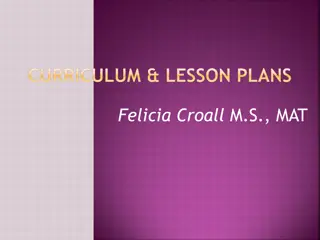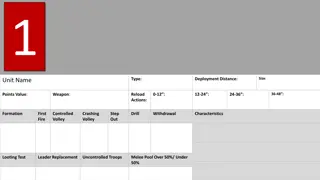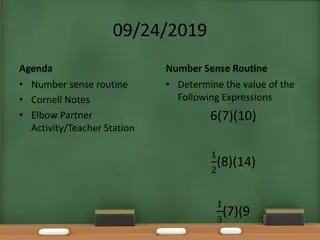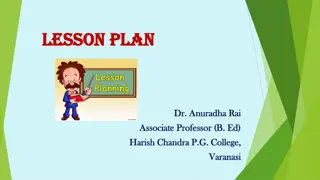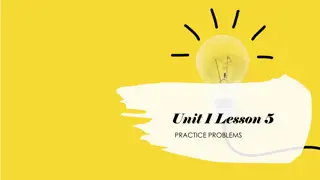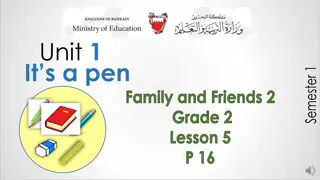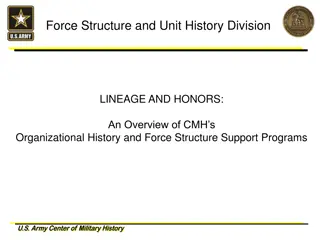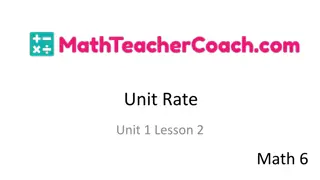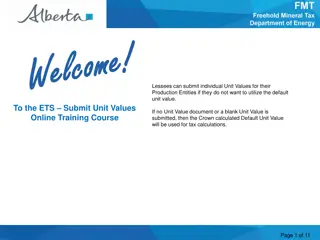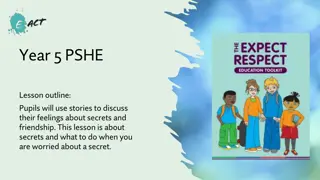Exploring Paul's Visit to Sundarpur: Unit-8, Lesson-3
Discover the story of Paul's visit to the village of Sundarpur in Bangladesh through an engaging lesson filled with learning outcomes focused on reading, understanding dialogues, answering questions, and more. Immerse yourself in the cultural beauty and hospitality of Bangladeshi people as Paul interacts with locals, highlighting themes of volunteerism, arsenic poisoning, green coconut, and personal preferences. Dive into activities like sharing likes and dislikes in pairs and embracing the essence of community connections.
Download Presentation

Please find below an Image/Link to download the presentation.
The content on the website is provided AS IS for your information and personal use only. It may not be sold, licensed, or shared on other websites without obtaining consent from the author. Download presentation by click this link. If you encounter any issues during the download, it is possible that the publisher has removed the file from their server.
E N D
Presentation Transcript
Bangladeshi is a land of natural beauty and the people living here are very much hospitable. When any foreigner come to visit Bangladesh, we take him/her cordially. So every year many foreigners come to visit Bangladesh and they love to meet the native people.
Same thing happened with Paul. He came to visit the village Sundarpur and he went to Sundarpur High School, where Kobita studies.
PaulVisits Sundarpur Our today s lesson is on his visit. And it is Unit-8, Lesson-3
Learning outcomes After this lesson the students will be able to 1. read, understand and act out dialogue. 2. answer the given questions after reading the text. 3. make a chart of Paul s likes/dislikes. 4. compare their likes/dislikes with Paul. 5. choose the best answer from the alternatives.
Volunteer The person who works selflessly for greater benefit of the society.
Arsenic poisoning Poisoning caused by arsenic.
Green coconut Tender coconut
A. In pairs, tell your partner the names of four things- one thing you like, one thing you dislike, one thing you love and one thing you hate. But don t tell him/her which ones you like, dislike, love and hate. Your partner guesses which one you like/dislike/love/hate. Follow the example given below. A. Mathematics, washing clothes, rain, dry fish B. You like mathematics. A.You re right. B. You love washing clothes. A.That s not right. B. Then you love rain and hate washing clothes. A. Yes. B. And you dislike dry fish. A. No, I love it. B A
B. Paul is a young volunteer of an international NGO in Bangladesh. He visits Sundarpur to talk to the villagers about arsenic poisoning. Read the passage to know about his visit. Paul went to Sundarpur High School to meet the teachers and students there. He was warmly greeted by all. He quite enjoyed the green coconut drink that was served on his arrival. He gave a short lecture to the students and explained how they would fight against arsenic poisoning. Paul also answered the questions asked by some students. He liked most of the questions. He also took some pictures with the students.
He always takes his camera with him. He loves photography. As he was taking leave, all the students followed him up to the school gate. The teachers wanted to hire a rickshaw for him. He does not like riding rickshaws. In fact, he hates the idea of sitting while another person is pulling the rickshaw. So, he did not mind walking towards the local Union Council Office.
C. In pairs, discuss the following questions. 1. Why did Paul go to Sundarpur High School? 2. Did Paul like the students and teachers of the school? 3. How was Paul entertained at the school on his arrival? 4. What did Paul talk about to the students of the school? 5. Why doesn t Paul like riding rickshaws?
D. Read the statements about Pauls likes/dislikes and replace the underlined parts of each sentence with a phrase given in the box. 1. Paul quite likes the green coconut drink. (really likes) 2. He didn t mind walking along the village roads. (did not dislike) 3. He loves taking pictures. (enjoys) 4. He hates sitting idly in a rickshaw. (really dislikes) really dislikes did not dislike enjoys really likes
E. Write your likes and dislikes in the grid below. Then compare your completed grid with a partner. Things I really like Things I like I really like to read novels. I really like to play crickets. I like to read poems. I like to walk in the morning. ... ... ... I really like to travel. ... ... ... I like to play chess. Things I dislike Things I really dislike I dislike wasting time. I dislike sound pollution. I really dislike bad people. I really dislike lies. ... ... ... I dislike classical music. ... ... ... I really dislike waking up late.
Tick the best answer. 1. He was warmly greeted by all. Here warm means a. cold. b. cool. c. tolerable. d. heated. 2. He quite enjoyed the green coconut drink. Here quite means a. partly. b. incompletely. c. completely. d. partially.
Tick the best answer. 3. Which one of the following words has a similar meaning of enjoy ? a. dislike. b. delight in. c. hate. d. avoid. 4. He gave a short lecture to the students and explained how they would fight against arsenic poisoning. What does explain mean? a. Define. b. Solve. c. Obscure. d. Interpret.
Tick the best answer. 5. Which one of the following words has a similar meaning of arrive ? a. depart. b. reach. c. leave. d. enter. 6. Paul went to Sundarpur High School to __ the teachers and students. a. meet. b. call. c. find out. d. discuss with.
Tick the best answer. 7. Paul was greeted a. coolly. b. formally. c. coldly. d. warmly. 8. Paul went to Sundarpur High School because a. he wanted to meet the teachers. b. he wanted to meet the students. c. he wanted to meet the teachers and students. d. he wanted to collect his result.
Tick the best answer. 9. When he arrived at the school, he was offered a. green mango juice. b. green coconut drink. c. green guava. d. coconut juice. 10. What was the subject of his short lecture to the students? a. Arsenic poisoning. b. Pure water. c. Arsenic. d. Drinking water.


